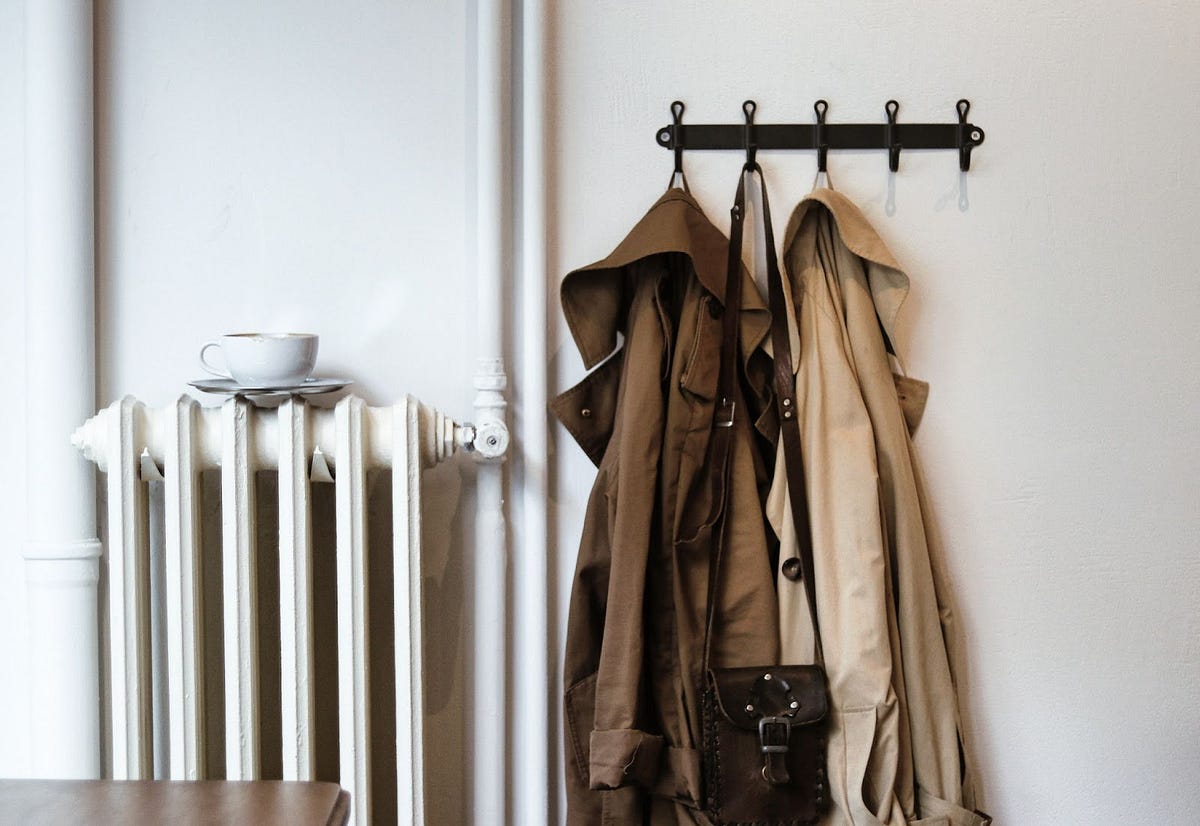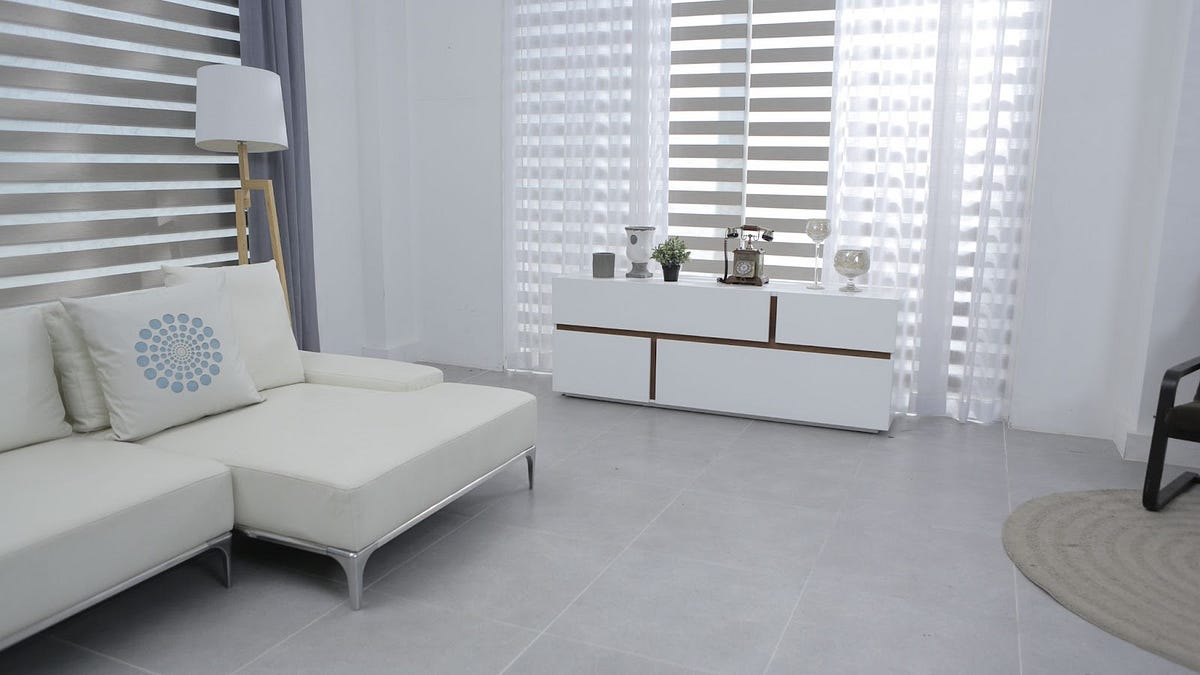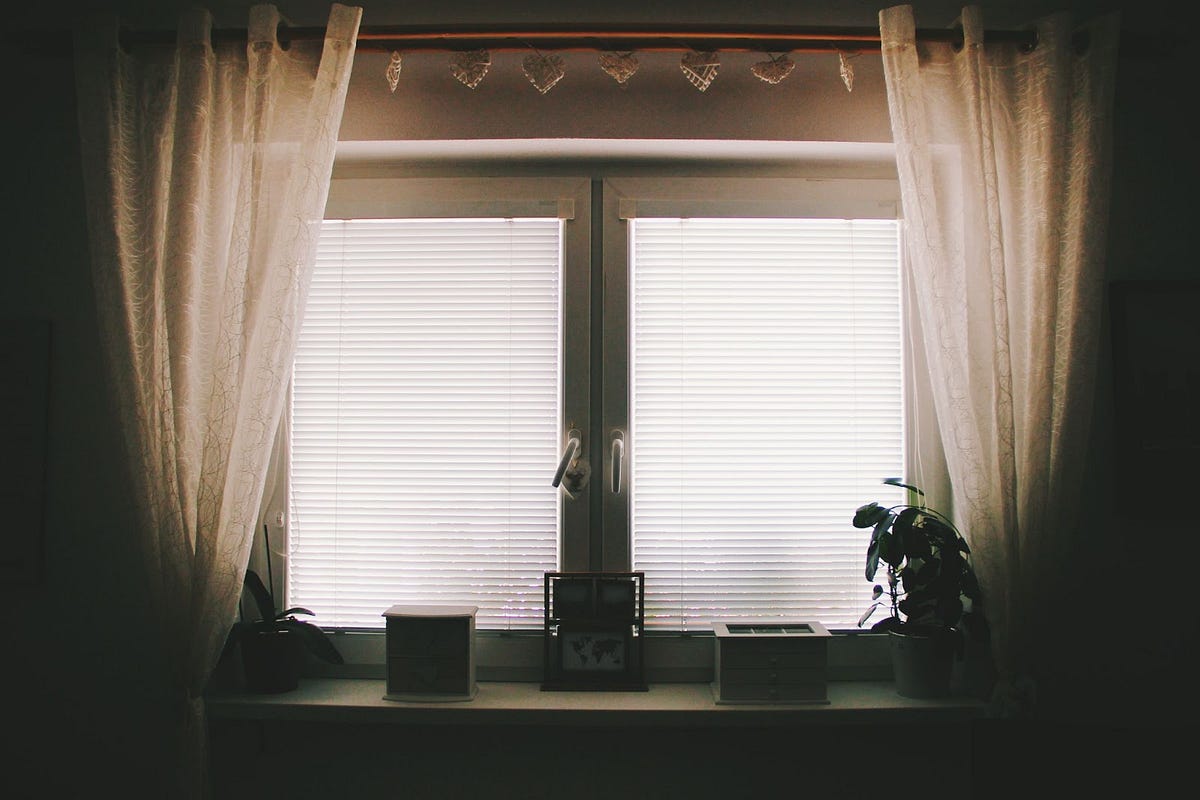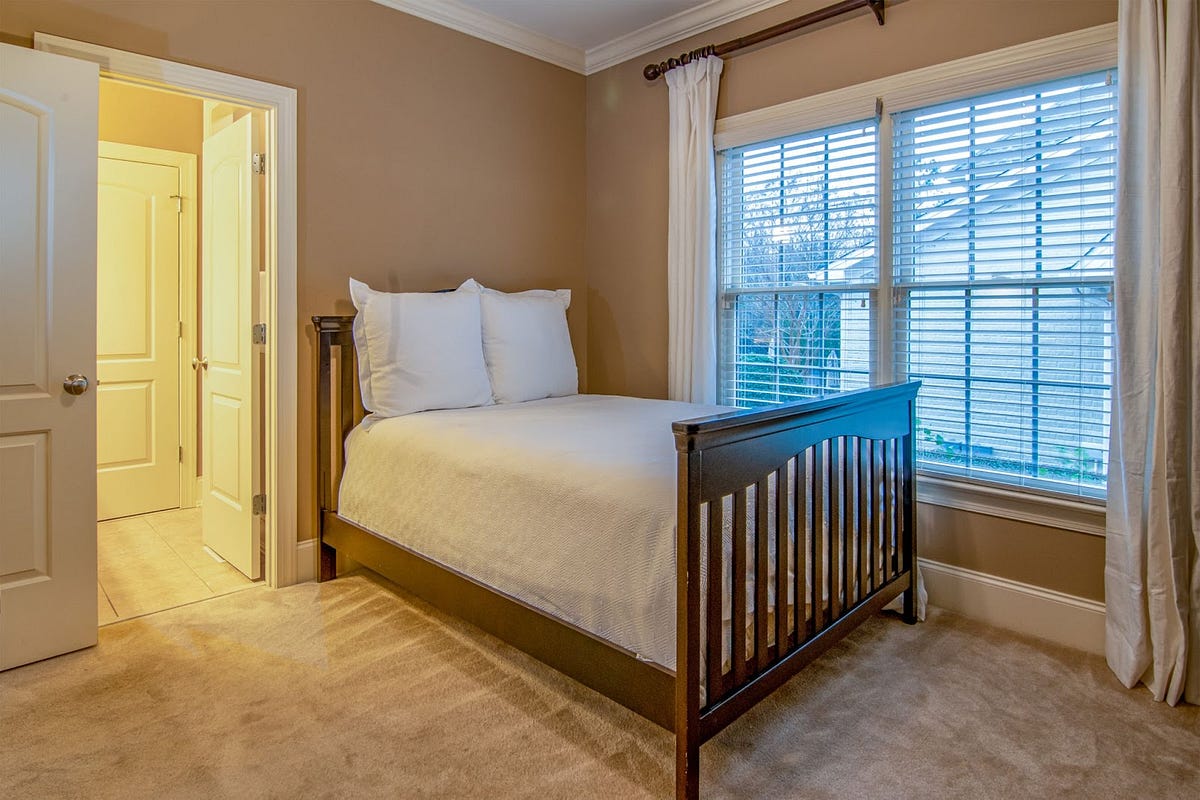How to Install Curtains over Blinds: Step-by-Step

IN THIS ARTICLE
For some rooms, curtains alone may not give you enough light control or privacy. However, opting for only blinds may leave the room feeling cold and lacking depth. Add a sense of depth and elegance to your home decor and your space by installing curtains over your blinds.
CHECK OUT OUR CORDLESS ROMAN SHADES
Design Considerations
When combining window coverings, you can create a complete look that makes a room feel warm and cozy. You can also add curtains that lighten and brighten a room. Understanding how the two window treatments play together will help you create a space you enjoy.
Curtains give you the ability to play with colour in your room. Consider the colour of your blinds and how curtains can accentuate or minimize the emotions that colour evokes. The colour of your curtains can also shift the focus of the room toward or away from the window.
The ability to play with colour through your window curtains is not a free pass to go overboard with patterns. Keep things looking coherent and well-designed by matching solids with one print per room. For windows with warm-toned faux wood blinds, consider pairing with a solid colour curtain to prevent the design from becoming too busy.
The mounting location of your window shades matters when considering installing curtains over them. Curtains look best when overtopping inside mounted blinds. The curtains will cover the mounting hardware and highlight the window height and shape. Adding curtains over outside mounted blinds adds bulk to the top of the window. The mounting hardware for the blinds may make it difficult for the curtains to lay smoothly or move without issues.
How to Install Curtains Over Blinds
The process for how to install curtains over blinds is simple. Depending on your mounting type, you may not even need to drill holes. Here are the steps to follow when installing curtains over blinds.
Choose Your Mount
You need mounts for your curtain rod to rest in. When you are installing curtains over blinds, you have several options for mounting your curtain rod.
You can use the traditional curtain rod with external mounting hardware to drill into the wall after careful measurement. This works well with modern cordless roman shades since their internal hardware is completely hidden behind the fabric.
If you have horizontal aluminum blinds or vertical slat blinds, you can mount the curtain rod onto your blinds with the help of a curtain rod bracket attachment. You can install this bracket without drilling any additional holes into your walls. The bracket secures to the headrail of your blinds and holds the curtain rod out away from the window.
Install Your Mount
Curtains look best when installed 8 to 12 inches wider than your window and at least 4 inches above the window frame. Measure the locations for your curtain rod brackets using these guidelines. Mark the location of your brackets with a pencil. If you have one available, use a laser level to ensure your mounts keep your curtain rod level. Then drill holes for the bracket screws using a drill. If you are mounting your curtain rod in drywall, you may need to insert anchors before attaching your curtain brackets with screws.
If you are mounting your curtain rod onto your blind’s headrail, you won’t need any power tools for the job. Simply slide the bracket onto the headrail and adjust the tightening screw, as necessary, to ensure a secure fit. For the best support of your curtain rod, place the attachment within an inch of the ends of your blinds.
Hang Your Curtains
Once your hardware is installed, it’s time to hang your curtains. The amount of curtain you need depends on the size of the window you have. It’s not enough to have curtains the width of your curtain rod. You want your curtains to feel full, block light and provide privacy. Ideally, your curtains will be twice the width of your window.
Avoid hanging curtains that are too short. Curtains that extend to the floor add height to a room and make your window feel longer. It’s acceptable for your curtains to hang on the floor, but if you want to keep your curtains from dragging and getting dirty, choose a length that ends about an inch above the ground.
BROWSE OUR COLLECTION OF FAUX WOOD BLINDS
Mount a Tieback
While not necessary for the setup, a tieback is an excellent addition to your window treatment. It provides function while adding style. You should mount tiebacks three inches from the edge of the window and about a third of the way up from the bottom.
How To Hang Curtains Without Nails Or Drills
There are several instances where you won’t be able to use nails or drills to hang your curtains. Maybe you’re a renter and not allowed to put any holes in the walls; perhaps you live in an old home with plaster walls that can’t handle nails or screws. In these cases, there are still plenty of DIY ways to hang curtains without nails or drilling!
Coat Hooks
One popular way to hang curtains without nails is by using coat hooks. You can find these at most hardware stores, and they come in a variety of sizes and styles. Smaller coat hooks can hold up to 10 pounds, while larger ones can hold up to 20 pounds (though this varies from brand to brand).

To use coat hooks, simply screw them into the wall or window frame at the desired distances apart. Then, loop your curtain through the hook and adjust to create the look you want. This is a great option if you’re looking for a temporary solution, as they’re easy to remove without damaging your walls or window frames.
Command Hooks
The command hook is a completely groundbreaking way to hang things without nails! These little guys come in different sizes and colours, and can hold pictures, paintings, curtains, and more. They work by sticking to your wall or window frame with an adhesive strip that won’t damage your paint or wallpaper.
To use command hooks for curtains, start by measuring the width of your window. Then, adjust your curtain rod to be about 2–3 inches wider than the window on each side (this will ensure full coverage when closed). Once you have your desired measurements, simply adhere the command hook to the wall or frame at either end of the window. Gently place your curtain rod over the hooks and adjust to create the look you want.
Suspended Rods
Suspended rods are hung from the ceiling instead of the wall or frame, which gives them added stability. These rods usually require you to find two studs in the ceiling and screw some eye hooks in; you can avoid this, however, by simply using hanging command hooks instead.
Tension Rods
Tension rods push against your walls or window frames to create tension and stay in place. They allow you to hold up curtains without nails, screws, or adhesive strips.
To use a tension rod, loop your curtain onto the rod. Then simply extend the rod until it is pushing firmly against the inside of your window frame — or alternatively, against your walls on either side of the window.
Why Should You Hang Curtains Over Blinds?
You may be wondering — if there’s already a perfectly good set of blinds installed, why would you want to go to the extra effort of hanging curtains over them? Well, there are actually a few reasons. Let’s take a look.
Controls Temperature
In the winter, heat from the sun coming in through your windows can help warm up your home. But in the summer, that same sunlight can make things uncomfortably hot. Hanging curtains over blinds gives you an extra layer to block out some of that unwanted heat.
Light Control
Do you like to sleep in on the weekends? Or maybe you work from home and need to focus during the day. Either way, having complete control over the amount of light coming into your room can be very helpful. With curtains over blinds, you can adjust both to get just the right level of light (or darkness) for your needs.
Enhanced Privacy
Closed blinds are definitely more private than open ones, but they can still allow people to see inside if the light is just right. Curtains give you an extra layer of protection against nosy neighbours or passersby.
Different Ideas for Window Treatments With Curtains
So, you’re interested in installing curtains over blinds. This is a great way to change up your window treatments and add a bit of style to your home. But what combination should you use? What works best?
Window shutters with floral curtains
Shutters and florals are two aesthetics from the traditional design playbook that always work well together. This look can be created by installing plantation shutters on the inside of your window frame and then hanging curtains over them.
If you want to add a touch of drama, go for dark-coloured shutters with light-coloured floral curtains. Or, if you want to keep things light and airy, opt for white shutters with pastel-hued curtains.
Aluminum blinds with light-filtering curtains
For a modern take on this window treatment idea, pair aluminum blinds with light-filtering curtains. This look works best in rooms with plenty of natural light, as the aluminum blinds will reflect some of the sunlight and help brighten up the space.
The key to making this combination work is to choose curtains that are similar in colour to the blinds. That way, the two elements will blend together seamlessly.
Single-cell honeycomb shades with blackout curtains
This combination is perfect for cool bedrooms or home offices, as the honeycomb shades will help keep the space insulated while the blackout curtains block out the evening sunlight.
Again, it’s important to choose curtains that are similar in colour to the shades for a cohesive look. And, if you want to add a bit of pattern or texture to the space, opt for curtains with a subtle print.
Need Some Inspiration?
The options are endless for pairing high-quality blinds with curtains. Check out the ideas and resources available on Factory Direct Blinds. We have a wide selection of quality blinds at factory direct prices. You’re sure to find the perfect fit for your windows.
FAQs About Installing Curtains Over Blinds
Is it OK to put curtains over blinds?
Yes, it is certainly OK to put curtains over blinds. It can actually be a great way to add another layer of style and interest to your windows. If you want a no-drill solution, you can get hold of some great adhesive hooks that will do the trick just as well.
Can I hang curtains over vertical blinds?
There is no rule that says you can’t hang curtains over vertical blinds. However, keep in mind that vertical blinds — particularly panel-style blinds — might interfere with how your curtains hang. Roller shades are a great vertical option since they sit flush with the window.
How do you hang curtains over horizontal blinds?
The best way to hang curtains over horizontal blinds is to use a tension rod. This will allow you to adjust the height of your curtains so that they sit just above the blinds. You can also use command strips or adhesive hooks if you don’t want to put any holes in your walls.
What are the benefits of putting curtains over blinds?
There are a few benefits to putting curtains over blinds. First, it can add another layer of style and interest to your windows. It can also help to block out light — particularly if you choose blackout curtains. For cool areas, it can provide some extra insulation during the colder months.
How long should the curtains be?
Since you will be hanging the curtain rod above the window frame rather than inside mount, you should add extra length to your curtains. Either have them sitting over the bottom of the window frame, or bring them all the way to the floor for a more luxurious look.








